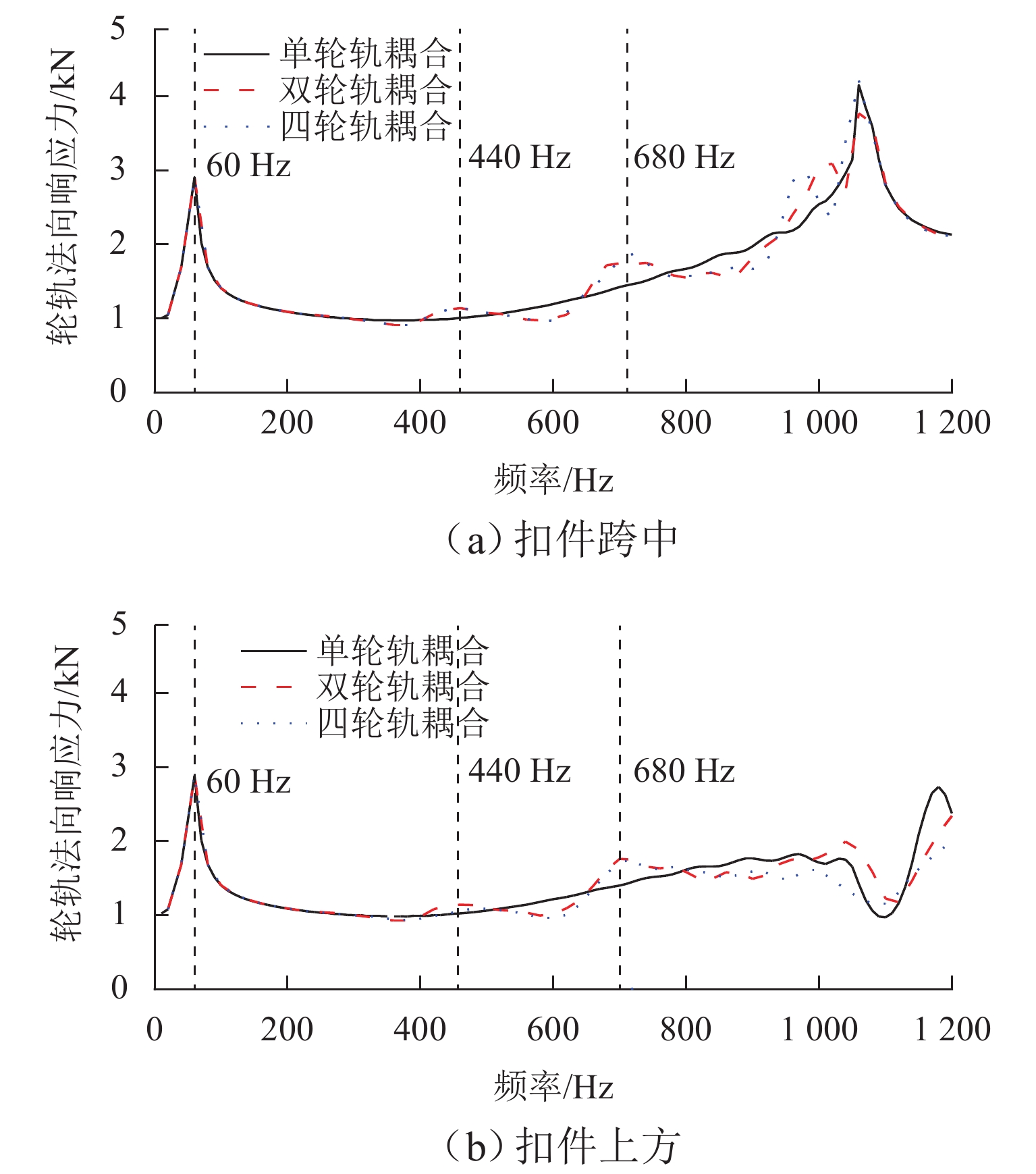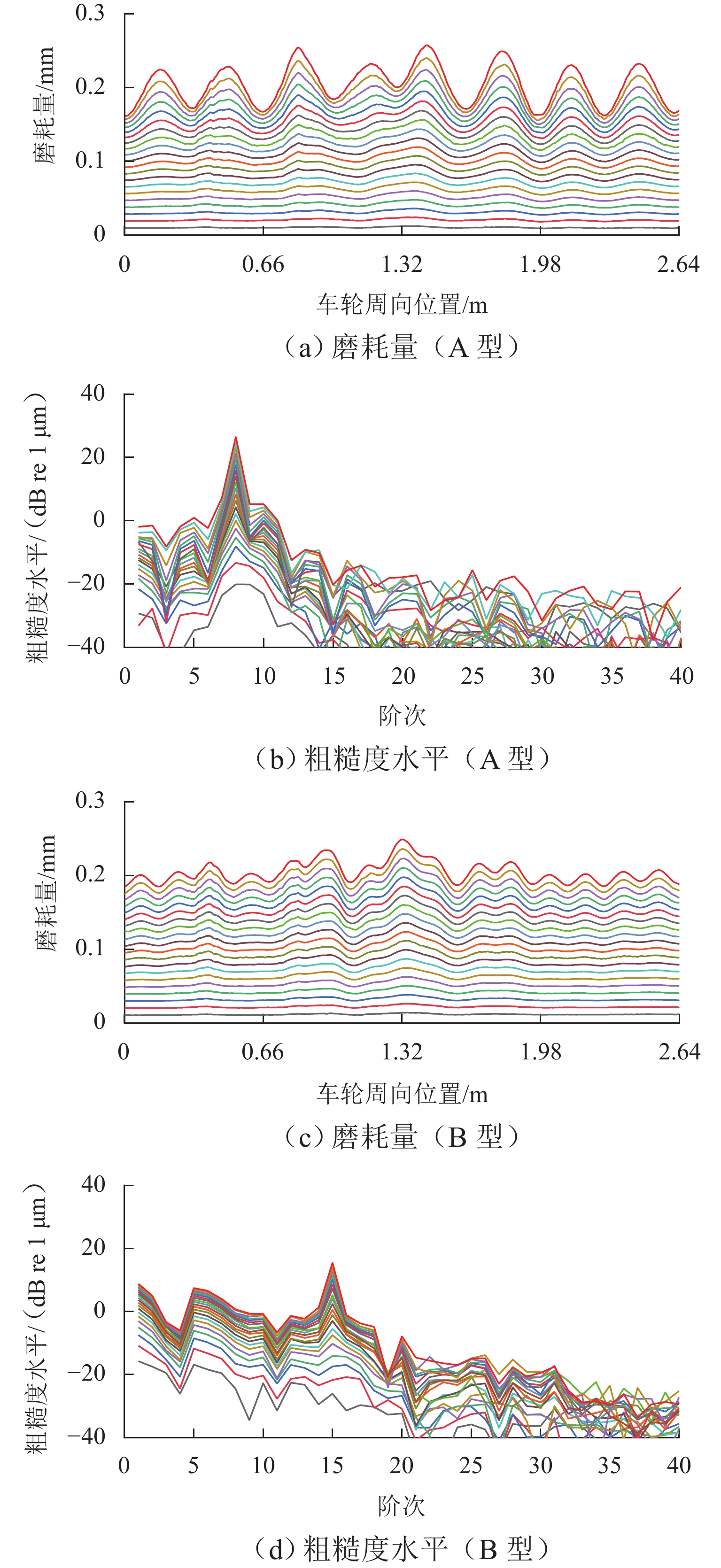Formation Mechanism of Metro Wheel Polygonal Based on Vehicle-Track Coupling
-
摘要:
车轮多边形磨耗会恶化轨道车辆振动环境,导致结构部件的共振疲劳失效,严重威胁行车安全. 为研究地铁车辆车轮多边形磨耗的形成机理,开展线路动态跟踪试验研究,建立车轨垂向耦合有限元模型和动力学模型,并进行轮轨长期磨耗迭代仿真分析. 研究结果表明:实测车辆发生了明显的7~9阶的车轮多边形磨耗,导致车辆出现50~70 Hz的强迫振动,频率与轮轨系统耦合振动
P 2力频率接近;通过车轮磨耗迭代仿真分析,确定了钢轨周期性接头焊缝不平顺引起的轮轨系统P 2力共振是导致车轮7~9阶多边形磨耗的根本原因;对钢弹簧浮置板道床和梯形轨枕道床而言,长期轮轨P 2力作用会分别引起8阶和15阶车轮多边形磨耗.Abstract:Wheel polygonal wear will deteriorate the vibration environment of rail vehicles, lead to resonance fatigue failure of structural components, and seriously threaten driving safety. To study the formation mechanism of wheel polygonal wear of metro vehicles, the dynamic line tracking test was carried out, and the vertical coupling finite element model and dynamics model of the track were established. In addition, the iterative simulation analysis of long-term wheel-track wear was carried out. The results show that the wheel polygonal wear of 7–9th order occurs in the measured vehicle, which leads to the forced vibration of 50–70 Hz, and the frequency is close to that of the
P 2 force during the coupling vibration of the wheel-track system. Through the iterative simulation analysis of wheel wear, it is determined thatP 2 force resonance of the wheel-rail system caused by periodic irregular rail joint weld is the root cause of the 7th–9th order wheel polygonal wear. Under the long-term action ofP 2 force, the floating slab track bed and the ladder sleeper track bed of steel spring will cause 8th and 15th order wheel polygonal wear, respectively.-
Key words:
- metro vehicle /
- wheel polygon /
- vehicle-track coupling /
- wear model /
- vehicle dynamics
-
随着轨道交通科技的飞速发展,对城市轨道交通也提出了新的技术要求,在大规模的应用中也出现了很多亟待解决的工程和科学问题,车轮多边形磨耗便是其中之一[1-2]. 车轮多边形现象广泛存在于轨道车辆,会使轮轨接触关系恶化,加剧轮轨相互作用,使车辆在运行过程中产生异常振动和噪声. 随着运营时间的增长,长期的相互剧烈作用会出现轮轨异常磨耗,严重影响旅客乘坐舒适度以及周边环境;同时,异常振动会导致部件疲劳失效或损坏,严重时可能会影响正常运行,不利于行车安全[3-4]. 因此,车轮的多边形磨耗问题一直是研究的热点与难点.
Johansson和Andersson[5]建立了列车-轨道耦合动力学模型,结合长期磨耗模型进行车轮多边形磨耗研究,认为40 Hz的轮轨系统P2力共振和轨道在垂直方向上的反共振会导致车轮失圆的发展. Tao等[6-7]通过现场试验对地铁列车车轮多边形磨耗机理进行了研究,结果表明,波长固定的5~8阶车轮多边形磨耗的根源是轮轨系统P2力共振. Cai等[8]通过对车辆-轨道耦合动力学模型施加扫频激励来研究轮轨法向力的谐波特性,结果表明,转向架前后轮对之间的钢轨垂弯模态对轮轨力动态响应有重要影响,是车轮高阶多边形磨耗形成的主要原因. Ma等[9]建立了考虑轮轨变摩擦特性的多车-轨耦合动力学模型,模拟了轮轨共振,研究发现,转向架车轮间钢轨弯曲方式是诱发摩擦功率共振和多边形磨耗产生的关键,其中钢轨3阶弯曲共振是产生高阶多边形磨耗的根本原因. Yang等[10]针对地铁车辆出现的13~16阶多边形磨耗进行了现场试验和仿真分析,认为轮轨系统P2共振是导致车轮高阶多边形磨耗的主要原因,而轮对的一阶弯曲振动会加剧车轮多边形化. Qu等[11]对转向架轴距之间的钢轨进行了现场台架模态试验,证实了区间内钢轨局部弯曲模态的存在,并认为该局部弯曲模态的共振导致了车轮多边形. 董雅宏[12]建立了车轮多边形磨耗发生与演化模型,并进行现场跟踪实测数据进行验证,结果表明,车轮高阶多边形磨耗遵循“定频整分”规律,且19阶左右的多边形主要来源于轮对的2阶弯曲模态. 胡晓依等[13]通过建立车轮多边形磨耗长期磨损迭代模型研究车轮多边形发展的影响因素,结果验证了频率固定机理的可靠性,发现钢轨模态的振动特性对于高阶车轮多边形的产生具有一定的促进作用. 然而,通过研究车辆与轨道的耦合关系对车轮多边形磨耗的关系都只针对简单的普通轨道结构,未能考虑不同轨道结构的影响. 对于地铁车辆而言,车轮多边形磨耗是一个异常复杂的过程,对其机理的正确认识是解决问题的基础.
本文针对地铁车辆车轮多边形磨耗问题,通过动力学跟踪试验分析多边形磨耗的规律和形成原因,并建立考虑不同结构类型轨道的车轨耦合模型,通过参数分析研究不同轨道结构对车轮多边形磨耗形成的影响,并运用长期磨耗迭代仿真方法对不同车轨耦合模型下的车轮磨耗发展规律进行预测,以揭示城轨车辆的多边形磨耗形成机理和发展规律.
1. 车轮多边形磨耗的线路试验研究
1.1 多边形磨耗测试分析
为探究地铁车辆多边形磨耗的分布特性和演变规律,对线路上运营的车辆车轮多边形状态进行磨耗测试普查. 测试的对象为最高运营速度80 km/h的某型地铁车辆,名义滚动圆半径为0.42 m,如图1.
选用线路上同型号的4列地铁车辆来代表不同镟后运营里程下的车轮磨耗状态,分别用A、B、C、D表示,车辆镟后运营里程均依次增加,为
9800 、57000 、83000 、179000 公里. 其中,车辆A可以认为是车轮镟修后的状态,此时车轮踏面廓形处在较好的状态. 图2为4列地铁车辆磨耗测试后得到的车轮粗糙度结果,图中,细实线表示单个车轮的粗糙度水平,带空心圆粗实线表示整车车轮粗糙度平均值. 对比可知:车轮1阶多边形磨耗广泛存在于车辆车轮上;车轮偏心粗糙度水平能通过镟修作业暂时降低,但很难完全消除;车辆A上的车轮除了存在明显的偏心磨耗外不存在明显的其他阶次多边形,具有较好的不圆度;而车辆B上的车轮则出现了7~9阶多边形痕迹,但是粗糙度水平较低,只有10 dB re 1 μm;车辆C镟后运行里程较大,此时7~9阶多边形磨耗已经很明显,平均幅值接近15 dB re 1 μm,个别超过20 dB re 1 μm;车辆D则是在镟修后运营里程又有较大的增量,此时7~9阶多边形磨耗水平平均值已经超过15 dB re 1 μm,且多个车轮的峰值达到了30 dB re 1 μm,处于严重多边形磨耗水平. 可见,各车辆车轮上广泛存在偏心磨耗;随着运营里程的增加,车轮上会生长出较为明显的7~9阶多边形;同时,镟修作业能有效地降低车轮粗糙度水平,消除幅值较大的车轮多边形.图3则展示了某个车轮在镟修前、后的粗糙度测试结果,由图3(a)可以看出,车轮在镟修前明显存在不圆度幅值较大的波纹,而镟修后有了显著改善. 图3(b)中则是对应的粗糙度水平,可以看出镟修前车轮低阶多边形主要以8阶最为突出,镟修后得到了有效降低,整体不存在明显多边形现象. 镟修前后的1/3倍频程波长表示的粗糙度水平见图3(c),对比ISO 3095:2013[14]标准限值可以看出,8阶多边形对应的主波长329 mm在镟修后粗糙度水平下降到了限值范围内.
磨耗测试结果表明,大部分车轮都表现出明显的多边形现象. 对出现明显的多边形阶次车轮进行统计:有约65%的车轮存在明显的多边形,且阶次均低于10阶;除了少数车轮存在5、6阶多边形外,大多数车轮多边形阶次集中在7~9阶,以8阶多边形为主. 车轮多边形磨耗的阶次NOOR是关键的特征参数,决定着多边形磨耗的激发频率fOOR,如式(1).
fOOR=NOORV2πRw, (1) 式中: V为列车运行速度,Rw为车轮半径.
对于该线路上运营速度为40~80 km/h的地铁车辆而言,当车轮上存在7~9阶多边形时,车轮多边形的特征频率范围为30~76 Hz.
1.2 车辆动力学振动测试
车辆出现车轮多边形时必然会引起轮轨接触关系的变化,导致车辆在运行过程中振动加剧. 可见轮轨关系的变化是车轮多边形状态的直接反应,但运动过程中的轮轨关系是很难直接监测的,因而需要通过其他形式来间接反映[15]. 针对出现明显车轮多边形的地铁车辆开展了动力学振动测试,对车辆上关键部件的振动状态进行了跟踪监测,如轴箱、构架端部和车体地板面等,如图4所示,包括车轮镟修前和镟修后2种工况.
按照地铁线路上的21个站点将整个试验线路分为20个区段,并编号S1~S20. 图5(a)和5(b)给出了车轮镟修前轴箱的振动加速度和行车速度时域结果,包含车辆上行和下行. 镟修前,轴箱体垂向加速度幅值都保持在20g以内,但在部分路段则明显增大,且与车速相关. 通过对加速度信号进行短时傅里叶变换可以得到分析频率在500 Hz范围内的时频图,如图5(c)所示. 结果表明,车轮镟修前轴箱上存在明显的振动主频,集中在50~100 Hz,且存在于全程线路. 结合车速和线路公里标示可知,该振动频率和幅值会随着轨道结构和车速的变化而变化. 通过局部放大可以看出,该振动频率与轨道结构相互对应,在经过区段S1~S8时主频为50~70 Hz,在其他区段时还会存在70~100 Hz范围的主频. 结合轨道不平顺性分析,该区段内的轨道存在较为明显的波长为150~250 mm的钢轨波磨.
截取车辆速度保持在70 km/h的数据进行幅频分析,结果如图6(a)所示. 可以发现,轴箱振动幅频曲线存在明显的周期性峰值,对应不同阶次车轮多边形激励频率,其中50~70 Hz频率范围内存在3个明显的主频,分别为51.6、58.9、66.3 Hz,将其代入式(1)进行计算,正好对应7~9阶车轮多边形特征频率.
由此可见,车辆在该轨道区段运行时发生的异常振动来源于车轮多边形磨耗. 结合轨道线路对时频图进行分析发现,车辆在通过浮置板道床区段时存在50~70 Hz的振动主频,而在梯形轨枕整体道床区段上振动加速度幅值较小且不存在明显主频. 固定频率的振动发生在特定的轨道区段内,可以确定该异常振动与经过的轨道结构密切相关,可能与轨道系统耦合产生了该耦合频率,共振激励的作用下导致车辆在该频率范围内的振动加剧.
分别截取车辆经过浮置板道床和梯形轨枕整体道床时的轴箱加速度信号进行主频分析,结果如图6(b)所示. 镟修前,在梯形轨枕整体道床区段振动幅值均在0.2g以下,且不存在明显主频,但车辆在浮置板道床区段上的振动显著增大,幅值超过2.0g,主频集中在50~70 Hz,对应7~9阶车轮多边形特征;镟修后,除了幅值均有明显下降之外,在浮置板道床区段中50~70 Hz范围内的频率幅值远高于梯形轨枕整体道床区段. 此外,车辆镟修后在经过浮置板道床区段时,轴箱垂向加速度仍然存在车轮多边形特征频率,应该是与轨道系统发生了耦合,共振作用下导致的异常垂向振动,可以确定车轮多边形激励频率与车辆-轨道系统固有结构有关.
2. 车轨耦合模型
由试验分析可知,车轮多边形特征频率与轨道结构有关,因此在对车轮多边形问题研究时,需要将车辆系统与轨道系统进行耦合.
2.1 车轨垂向耦合有限元模型
将车辆系统和轨道系统之间考虑轮轨Hertz接触进行简化耦合[16],得到如图7车辆与轨道组成的垂向耦合模型. 其中,钢轨考虑成支承在均匀弹性基础上的无限长度的Timoshenko梁,车辆整车模型由两转向架四轮对组成的,轨道模型则详细考虑了扣件、轨道板、弹性支撑基础等.
由于车辆与轨道之间相互作用频率主要集中在20~
1500 Hz内,该范围内的轮轨振动会因为一系悬挂的隔振效果而很难传递到构架和车体,使得只有簧下质量参与振动[17-18]. 可以确定车轮多边形磨耗主要与车辆系统簧下质量相关,因而在垂向模型中可以将簧上质量视为集中质量. 根据实际的车辆和轨道结构参数,建立车辆-轨道垂向耦合仿真模型,作用单位激励为1000 N,分析频率在1200 Hz以内,考虑钢轨的轨枕扣件上方和跨中2个作用点.通过仿真分析可以得到钢轨的频响特性,图8(a)是考虑单个轮对作用在轨道上的结果. 将车轮不圆顺粗糙度幅值Ao设置为1 μm,可以得到此时轮轨法向力的频响特性如图8(b)所示. 在单轮轨耦合作用下钢轨的频响位移导纳曲线和轮轨法向力曲线在60 Hz处都存在明显的峰值,在
1080 Hz附近根据激励作用点位置不同存在峰值和谷值. 其中,60 Hz是由轮轨P2力共振频率引起,1080 Hz是钢轨Pinned-Pinned模态频率. 同时,频响特性未出现其他峰值,可以认定不存在与车轮多边形相关的模态.实际上,车辆与轨道是多个车轮与轨道相互作用,钢轨会受到多个轮对的约束. 由于轮对间距越小对钢轨的约束作用越显著,为了突出主要影响因素,简化仿真过程中的复杂情况,在建模中选用的单节车进行的仿真. 在车辆-轨道动态行为分析中振动是在钢轨上传递的,轮轨约束会对振动的传递产生影响,尤其是轮轨高频垂向振动. 存在多个轮轨接触的钢轨,其振动传递引起的相互作用会改变频响特性. 图9为车辆与轨道之间的相互作用示意,一位轮对因车轮多边形不圆顺在轮轨接触的过程中产生了激励,形成的相互作用力F1在钢轨上传播. 当传递到其他轮对所处位置时,会与轮轨接触产生相互作用,产生被动的作用力P12、P13和P14. 因而一位轮对处的轮轨相互作用力是由一位车轮自身与钢轨作用以及其他车轮和钢轨作用共同叠加产生的. 在第i个轮轨接触点处的接触力会由2部分力组成,一是该点自身粗糙度激励引起的轮轨主动作用力 ,另一部分则是由其他轮轨接触点处的轨道振动引起的轮轨被动作用力[19-20].
总的轮轨被动力是通过各接触点产生的被动力叠加而成,如式(2).
Pbi=M∑j=1,j≠iPji, (2) 式中:M为轨道上考虑的轮轨接触点个数,Pji为在第i个轮轨接触点处由第j个接触点处粗糙度激励引起的被动相互作用力.
因此,第i个接触点处的轮轨相互作用力FNi是主动作用力Fi和被动作用力Pbi的组合,如式(3).
FNi=Fi+Pbi. (3) 车辆运行通过不同轨道结构区段时,由于道床结构的差异系统内会产生不同的动力响应. 图10则是针对浮置板整体道床和梯形轨枕整体道床所建立的车辆-轨道耦合系统有限元半车模型. 由于多边形特征振动频率与车体柔性特征关系不大,在模型中可将其质量视作施加在转向架上的力,轮轨接触关系通过弹簧单元连接进行模拟[21]. 以beam188单元模拟钢轨,两端施加简支约束;扣件装置和道床支撑考虑为弹簧阻尼单元,采用combin14单元模拟,轨道板等结构则采用Solid185实体单元模拟. 该有限元模型其主要用于车轨耦合模态分析,以此确定耦合状态下不同轨道结构类型的振动模态.
根据Hertz接触理论,地铁车辆中,轮轨接触垂向刚度线性化的数值范围通常为
1225 ~1524 MN/m[20-24],在仿真分析过程中设定为1500 MN/m. 地铁车辆和轨道的主要参数如表1所示.表 1 地铁车辆和轨道的主要参数Table 1. Main parameters of metro vehicles and tracks参数 符号 数值 定距之半/m lc 7.85 轴距之半/m lw 1.25 车体质量/kg Mc 24937 构架质量/kg Mf 1830 轮对质量/kg Mw 1231 一系悬挂垂向刚度/(MN·m−1) Kps 1.5 一系悬挂垂向阻尼/(kN·s·m−1) Cps 2 浮置板道床扣件垂向刚度/(MN·m−1) Ka 50 浮置板支撑刚度/(kN·s·m−1) Ca 20 梯形轨枕扣件垂向刚度(MN·m−1) Kb 60 梯形轨枕纵梁支撑刚度/(kN·s·m−1) Cb 20 普通道床扣件垂向刚度/(MN·m−1) Kc 20 浮置板长度/m La 24 梯形轨枕纵梁长度/m Lb 6 2.2 车轮多边形磨耗迭代模型
车轨耦合状态下轨道的局部模态引起的结构共振是车轮对变形磨耗形成的根本. 在动力学模型中主要考虑轮对和轨道结构的柔性,能将弹性变形引起的蠕滑效果作用到轮轨接触模型中,使仿真更接近实际情况. 图11所示为考虑轮对和轨道柔性的车轨刚柔耦合动力学模型.
车轮多边形磨耗的预测模型主要由车辆-轨道系统动力学模型、轮轨接触模型和磨耗模型组成,如图12所示. 其主要流程是在建立的车辆-轨道耦合系统动力学仿真模型的基础上进行的,首先,将初始的车轮踏面、车轮不圆顺等输入,得到轮轨接触点位置、接触力大小、接触斑尺寸和蠕滑率等相应的轮轨接触参数,通过计算得到时域轮轨界面的响应,并将其输入到车轮磨耗模型中进行计算得到磨耗量;接着,运用磨耗量对初始车轮不圆顺和车轮踏面进行平滑处理和数值更新;然后,将更新后的数据作为再次输入到动力学模型和磨耗模型中进行仿真计算,如此对整个过程进行循环迭代;最终,得到车轮不圆顺发展过程,实现对车轮磨耗演变的预测. 其中轮轨接触模型的轮轨接触点位置由车辆运行过程中的车轮磨耗踏面与轨面实际接触状态决定. 由于车轮多边形磨耗是长期的时间累积过程,实时等距的仿真虽然精度很高但是效率低,因此,通常会对一段短时磨耗量的结果进行等效放大来增加磨耗量,以实现对车轮多边形形成和发展的预测和再现.
轮轨P2力共振模态是由于轮轨垂向瞬时激励作用引起的,在地铁线路上主要由轨道不平顺引起,因而,可以将轨道接头不平顺模拟成垂向激励输入到动力学模型中进行仿真,如图13所示为不平顺激励,作用在右侧钢轨上. 预测仿真模型中,设定多边形磨耗迭代总里程为3万公里,共进行20次迭代.
3. 车轨耦合分析
3.1 车轨耦合响应
运用车辆-轨道系统有限元模型,对不同轮轨接触状态下车轮不圆顺激励对轮轨相互作用力产生的影响进行分析,分别建立了包含单轮轨、两轮轨和四轮轨的垂向耦合激励模型,如图14所示. 模拟车辆作用在钢轨上的主动力FO设置为50 kN.
通过相对位移激励响应计算公式得到1 μm粗糙度幅值下轮轨力响应结果,图15所示是主动激励点处钢轨法向响应力的幅频曲线. 相比于单轮轨耦合作用,多轮轨耦合时轮轨法向响应力曲线波动更加明显. 在800 Hz范围内,波动峰值主要出现在60、440 Hz和680 Hz附近. 此时,60 Hz的轮轨P2力共振模态频率对应的响应力幅值最大,其次为680 Hz和440 Hz对应的幅值,分别对应着车轨耦合状态下轨道2阶和3阶垂向弯曲模态,此时激励会更容易引起这些频率范围的共振.
在车辆与浮置板道床的刚柔耦合动力学模型中,车轮无初始不圆顺,设定车速为70 km/h进行仿真,图16给出了车辆经过钢轨接头时轮轨法向力和横向蠕滑力变化情况. 可以看出:钢轨接头激励前左右车轮均存在幅值较小的32 Hz附近的轨枕通过频率,而激励作用后,左右车轮的轮轨法向力均出现了幅值大于轨枕通过频率的60 Hz左右的频率峰值,这便是轮轨P2力共振频率;此时右轮横向蠕滑力也出现了60 Hz附近的频率峰值,这与车轮多边形特征频率一致,而左轮的变化却不是很明显.
可见,通过钢轨接头时产生的轮轨垂向冲击对轮轨法向力和横向蠕滑力作用显著,是影响车轮磨耗量的重要因素,60 Hz附近的频率与车轨耦合作用下的轮轨P2力共振模态频率对应,从而产生共振,加速车轮磨耗.
3.2 车轨耦合模态
根据试验分析结果可知,车辆多边形特征频率主要出现在特定的轨道区段,因而需要对轮轨耦合作用下的轨道结构进行模态分析,确定不同轨道结构类型下的振动模态,轨道结构考虑浮置板整体道床(A型)和梯形轨枕整体道床(B型). 图17分别展示了整车作用下轨道的轮轨P2力共振模态频率和前四阶垂向弯曲模态频率随轨道参数变化的情况,其中橙色区域为参数的设计值.
从A型道床的结果中可以看出:在扣件垂向刚度分析范围内,轮轨P2力共振频率和轨道低阶垂向弯曲模态频率随刚度的变大逐步增长,其中P2力共振频率主要集中在30~75 Hz,与车轮多边形特征频率大范围重合,尤其是设计值50 MN/m附近时约为60 Hz;从支撑垂向刚度变化的仿真结果可以看出,其对浮置板道床轨道模态的影响较小. 对B型轨道仿真可以看出:各模态频率随扣件垂向刚度的变化较为明显,P2力共振频率主要集中在50~150 Hz,在设计值60 MN/m附近时约为115 Hz;而在垂向支撑刚度变化范围内各模态频率的变化都很小,P2力共振频率保持在110~120 Hz,与50~70 Hz的车轮低阶多边形激励特征频率范围相差较大,因而多边形激励很难激发起该范围的共振,从而解释了车辆运行到B型轨道区段时不存在明显多边形特征频率的原因.
4. 车轮多边形磨耗预测
车轮在滚动过程中存在周期性磨耗量,并能在圆周方向上持续叠加,而不会因随机相位而被抵消,是车轮出现多边形磨耗的前提条件. 钢轨焊缝接头冲击会使得车轮踏面出现较大磨耗量形成初始不圆顺,是导致车轮在后续磨耗迭代过程中出现多边形的根本原因,在迭代预测仿真中以该初始不圆顺为磨耗迭代基础,等比例放大后作为车轮不圆顺输入. 而轨道随机不平顺作用下的车轮磨耗量也是随机波动的,因此无法在车轮表面形成多边形磨耗. 在车轮多边形仿真迭代预测模型中,设定迭代总里程为3万公里,共进行20次迭代,仿真滚动一次的实际长度为
1500 m,等效放大因子为1000 ,并根据实际车速确定仿真车速为70 km/h.对于车辆运行在A型道床上时,图18(a)给出了迭代仿真计算过程中车轮多边形磨耗量的演变过程. 可以看出,车轮在最初由轮轨P2力共振引起的微小的车轮不圆顺,随着迭代次数的增加逐步发展,最终形成了波动明显的车轮多边形. 同时,对每次迭代得到的新的车轮不圆顺廓形进行粗糙度分析,可以得到图18(b)所示的粗糙度水平. 随着磨耗的不断累积,在经历了20次仿真迭代后,车轮表面不圆顺的多边形阶次由最开始的多阶次、不规则的多边形,演变成了以8阶次为主要阶次的规则多边形. 此时车轮多边形特征频率在60 Hz附近,可见轮轨P2力共振引起的初始车轮不圆顺是导致车轮出现8阶多边形的直接原因.
图18(c)和18(d)则分别展示了车辆运行在B型道床上时,车轮不平顺磨耗的迭代演变过程. 其中,车轮表面不圆顺在迭代中逐渐发展成了以特征频率115 Hz对应的15阶为主的车轮多边形. 可见,车辆从梯形轨枕整体道床上经过时,在经历钢轨接头激励作用后,会由于轮轨P2力共振在车轮表面产生含有115 Hz附近的初始不平顺,并在持续的磨耗迭代中发展成为主导频率,最终形成规则的车轮多边形.
综上所述,针对车轨耦合系统可以确定,当车轮受到垂向轮轨激励作用时会产生轮轨P2力共振,导致车轮表面形成初始不圆顺,而不同的轨道结构决定了P2力共振频率,也就决定了车轮表面初始不圆顺的波长,影响后续车辆在运行过程中车轮不圆顺的发展方向及车轮多边形磨耗的主要阶次. 轮轨P2力共振会形成最开始的车轮初始不圆顺,导致车辆在运行过程中出现相应频率范围的振动,当这一频率与车轨耦合作用下的结构模态发生系统共振时,在轮轨切削磨耗下加速该频率下的车轮多边形的发展,最终导致车轮表面规则多边形的形成. 由此可见,车轮和钢轨的表面状态是影响车轮多边形磨耗的外在诱因,当轮轨激励作用后形成的轮轨P2力则是车轮多边形磨耗的根本原因,因而对车轮和钢轨进行监测并及时镟修或打磨使其保持良好的表面状态是避免车轮多边形形成的有效手段.
5. 结 论
1) 地铁车辆出现的50~70 Hz范围内垂向异常振动来源于7~9阶车轮多边形激励,并与采用浮置板整体道床形式的轮轨系统P2力共振频率重合.
2) 轨道上的周期性不平顺即钢轨接头焊缝是导致出现轮轨P2力共振的主要诱因,而轮轨P2力共振则是导致车轮多边形磨耗的直接原因.
3) 不同轨道结构形式下P2力共振频率范围差别较大,与扣件刚度和支撑刚度等有关;不同的P2力共振频率会导致不同阶次的车轮多边形磨耗.
4) 磨耗迭代预测表明,轮轨P2力共振频率在60 Hz附近时,浮置板整体道床会促使车轮出现8阶多边形;P2力共振频率在115 Hz附近的梯形轨枕整体道床,会引起车轮的15阶多边形磨耗.
综上,车轮和钢轨的表面状态是影响车轮多边形磨耗的外在诱因,对车轮和钢轨进行监测并及时维护使其保持良好的表面状态是避免车轮多边形形成的有效手段.
-
表 1 地铁车辆和轨道的主要参数
Table 1. Main parameters of metro vehicles and tracks
参数 符号 数值 定距之半/m lc 7.85 轴距之半/m lw 1.25 车体质量/kg Mc 24937 构架质量/kg Mf 1830 轮对质量/kg Mw 1231 一系悬挂垂向刚度/(MN·m−1) Kps 1.5 一系悬挂垂向阻尼/(kN·s·m−1) Cps 2 浮置板道床扣件垂向刚度/(MN·m−1) Ka 50 浮置板支撑刚度/(kN·s·m−1) Ca 20 梯形轨枕扣件垂向刚度(MN·m−1) Kb 60 梯形轨枕纵梁支撑刚度/(kN·s·m−1) Cb 20 普通道床扣件垂向刚度/(MN·m−1) Kc 20 浮置板长度/m La 24 梯形轨枕纵梁长度/m Lb 6 -
[1] 刘维宁,马蒙,刘卫丰,等. 我国城市轨道交通环境振动影响的研究现况[J]. 中国科学:技术科学,2016,46(6): 547-559. doi: 10.1360/N092015-00334LIU Weining, MA Meng, LIU Weifeng, et al. Overview on current research of environmental vibration influence induced by urban mass transit in China[J]. SCIENTIA SINICA Technologica, 2016, 46(6): 547-559. doi: 10.1360/N092015-00334 [2] 魏鹏勃. 城市轨道交通引起的环境振动预测与评估[D]. 北京: 北京交通大学, 2009. [3] KANG X, CHEN G X, ZHU Q, et al. Study on wheel polygonal wear of metro trains caused by frictional self-excited oscillation[J]. Tribology Transactions, 2021, 64(6): 1108-1117. doi: 10.1080/10402004.2021.1970868 [4] ZHOU C, CHI M R, WEN Z F, et al. An investigation of abnormal vibration-induced coil spring failure in metro vehicles[J]. Engineering Failure Analysis, 2020, 108: 104238.1-104238.13. doi: 10.1016/j.engfailanal.2019.104238 [5] JOHANSSON A, ANDERSSON C. Out-of-round railway wheels—a study of wheel polygonalization through simulation of three-dimensional wheel-rail interaction and wear[J]. Vehicle System Dynamics, 2005, 43(8): 539-559. doi: 10.1080/00423110500184649 [6] TAO G Q, WEN Z F, LIANG X R, et al. An investigation into the mechanism of the out-of-round wheels of metro train and its mitigation measures[J]. Vehicle System Dynamics, 2019, 57(1): 1-16. doi: 10.1080/00423114.2018.1445269 [7] SHI Y X, DAI H Y, WANG Q S, et al. Research on low-frequency swaying mechanism of metro vehicles based on wheel-rail relationship[J]. Shock and Vibration, 2020, 2020: 8878020.1-8878020.15. [8] CAI W B, CHI M R, WU X W, et al. Experimental and numerical analysis of the polygonal wear of high-speed trains[J]. Wear, 2019, 440/441: 203079.1-203079.12. doi: 10.1016/j.wear.2019.203079 [9] MA C Z, GAO L, CUI R X, et al. The initiation mechanism and distribution rule of wheel high-order polygonal wear on high-speed railway[J]. Engineering Failure Analysis, 2021, 119: 104937.1-104937.14. [10] YANG X X, TAO G Q, LI W, et al. On the formation mechanism of high-order polygonal wear of metro train wheels: experiment and simulation[J]. Engineering Failure Analysis, 2021, 127: 105512.1-105512.14. [11] QU S, ZHU B, ZENG J, et al. Experimental investigation for wheel polygonisation of high-speed trains[J]. Vehicle System Dynamics, 2021, 59(10): 1573-1586. doi: 10.1080/00423114.2020.1772984 [12] 董雅宏,曹树谦. 车轮高阶多边形磨耗发生与演化特征分析[J]. 西南交通大学学报,2023,58(3): 665-676.DONG Yahong, CAO Shuqian. Analysis of occurrence and evolution characteristics of wheel high-order polygonal wear[J]. Journal of Southwest Jiaotong University, 2023, 58(3): 665-676. [13] 胡晓依,任海星,成棣,等. 动车组车轮多边形磨耗形成与发展过程仿真研究[J]. 中国铁道科学,2021,42(2): 107-115.HU Xiaoyi, REN Haixing, CHENG Di, et al. Numerical simulation on the formation and development of polygonal wear of EMU wheels[J]. China Railway Science, 2021, 42(2): 107-115. [14] The International Organization for Standardization. Railway applications—acoustics measurement of noise emitted by railbound vehicles: ISO 3095:2013[S]. [S.l.]: ISO Copyright Office, 2013. [15] 罗仁, 石怀龙. 铁道车辆系统动力学及应用[M]. 成都: 西南交通大学出版社, 2018. [16] ZHAI W M, WANG K Y, CAI C B. Fundamentals of vehicle−track coupled dynamics[J]. Vehicle System Dynamics, 2009, 47(11): 1349-1376. doi: 10.1080/00423110802621561 [17] KORO K, ABE K, ISHIDA M, et al. Timoshenko beam finite element for vehicle—track vibration analysis and its application to jointed railway track[J]. Proceedings of the Institution of Mechanical Engineers, Part F: Journal of Rail and Rapid Transit, 2004, 218(2): 159-172. doi: 10.1243/0954409041319687 [18] 林国进. 轮对弹性及参数对轮轨接触关系影响研究[D]. 北京: 北京交通大学, 2015. [19] WU T X, THOMPSON D J. Behaviour of the normal contact force under multiple wheel/rail interaction[J]. Vehicle System Dynamics, 2002, 37(3): 157-174. doi: 10.1076/vesd.37.3.157.3533 [20] 关庆华,周业明,李伟,等. 车辆轨道系统的P2共振频率研究[J]. 机械工程学报,2019,55(8): 118-127. doi: 10.3901/JME.2019.08.118GUAN Qinghua, ZHOU Yeming, LI Wei, et al. Study on the P2 resonance frequency of vehicle track system[J]. Journal of Mechanical Engineering, 2019, 55(8): 118-127. doi: 10.3901/JME.2019.08.118 [21] 陈小平,王平,陈嵘. 弹性支承块式无砟轨道的减振机理[J]. 铁道学报,2007,29(5): 69-72. doi: 10.3321/j.issn:1001-8360.2007.05.013CHEN Xiaoping, WANG Ping, CHEN Rong. Damping vibration mechanism of the elastic bearing block track[J]. Journal of the China Railway Society, 2007, 29(5): 69-72. doi: 10.3321/j.issn:1001-8360.2007.05.013 [22] 赵晓男,陈光雄,康熙,等. 兰新客运专线动车组车轮多边形磨耗的机理[J]. 西南交通大学学报,2020,55(2): 364-371. doi: 10.3969/j.issn.0258-2724.20190027ZHAO Xiaonan, CHEN Guangxiong, KANG Xi, et al. Mechanism of polygonal wear on wheels of electric multiple units on lanzhou-Xinjiang passenger dedicated line[J]. Journal of Southwest Jiaotong University, 2020, 55(2): 364-371. doi: 10.3969/j.issn.0258-2724.20190027 [23] QI Y Y, DAI H Y, GAN F, et al. Optimization of rail profile design for high-speed lines based on Gaussian function correction method[J]. Proceedings of the Institution of Mechanical Engineers, Part F: Journal of Rail and Rapid Transit, 2023: 095440972311525.1-095440972311525.13. [24] 王鹏,陶功权,杨晓璇,等. 中国高速列车车轮多边形磨耗特征分析[J]. 西南交通大学学报,2023,58(6): 1357-1365. doi: 10.3969/j.issn.0258-2724.20210777WANG Peng, TAO Gongquan, YANG Xiaoxuan, et al. Analysis of polygonal wear characteristics of Chinese high-speed train wheels[J]. Journal of Southwest Jiaotong University, 2023, 58(6): 1357-1365. doi: 10.3969/j.issn.0258-2724.20210777 期刊类型引用(2)
1. 陈清华,閤鑫,王开云. 基于SRCKF算法的轨道车辆轮轨垂向力识别. 西南交通大学学报. 2025(02): 403-410 .  本站查看
本站查看2. 张军,赵嘉明. 车轮多边形对轴箱振动特性的影响分析. 大连交通大学学报. 2024(06): 66-71 .  百度学术
百度学术其他类型引用(3)
-






 下载:
下载:

















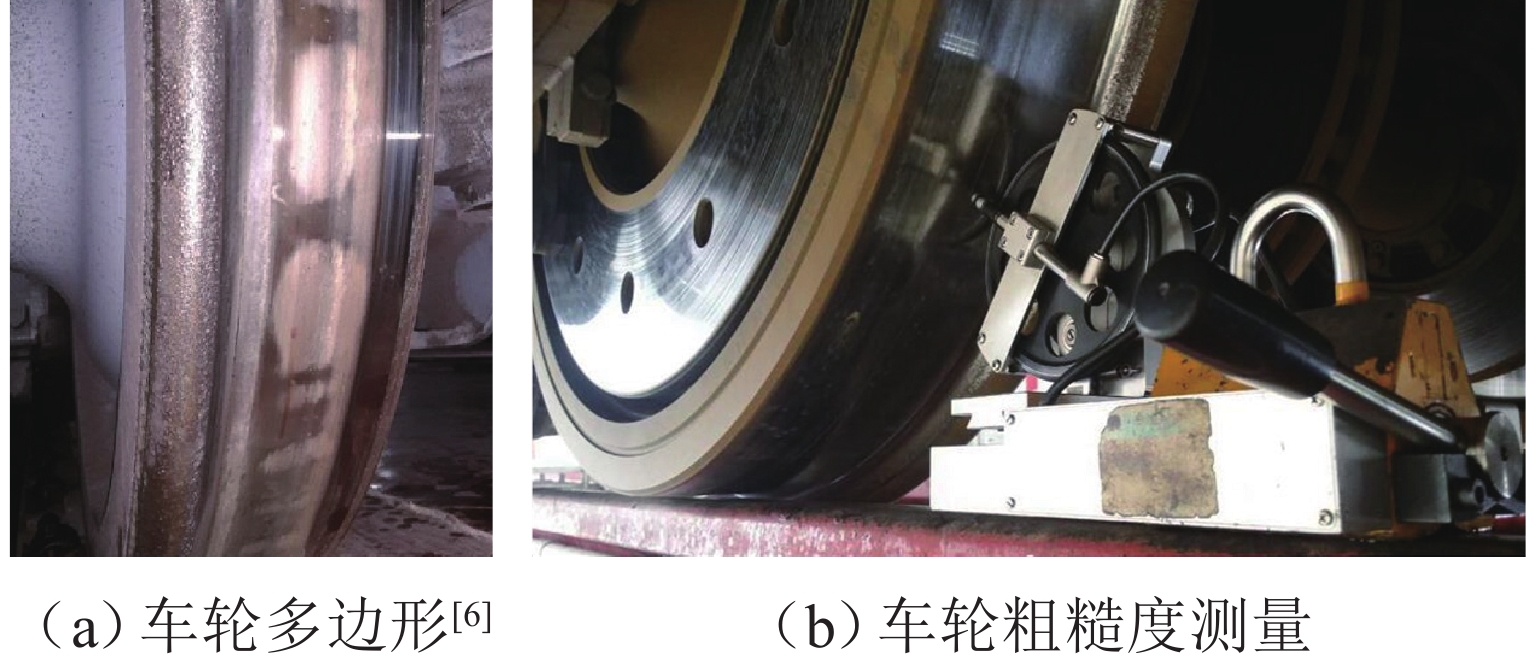
 下载:
下载:

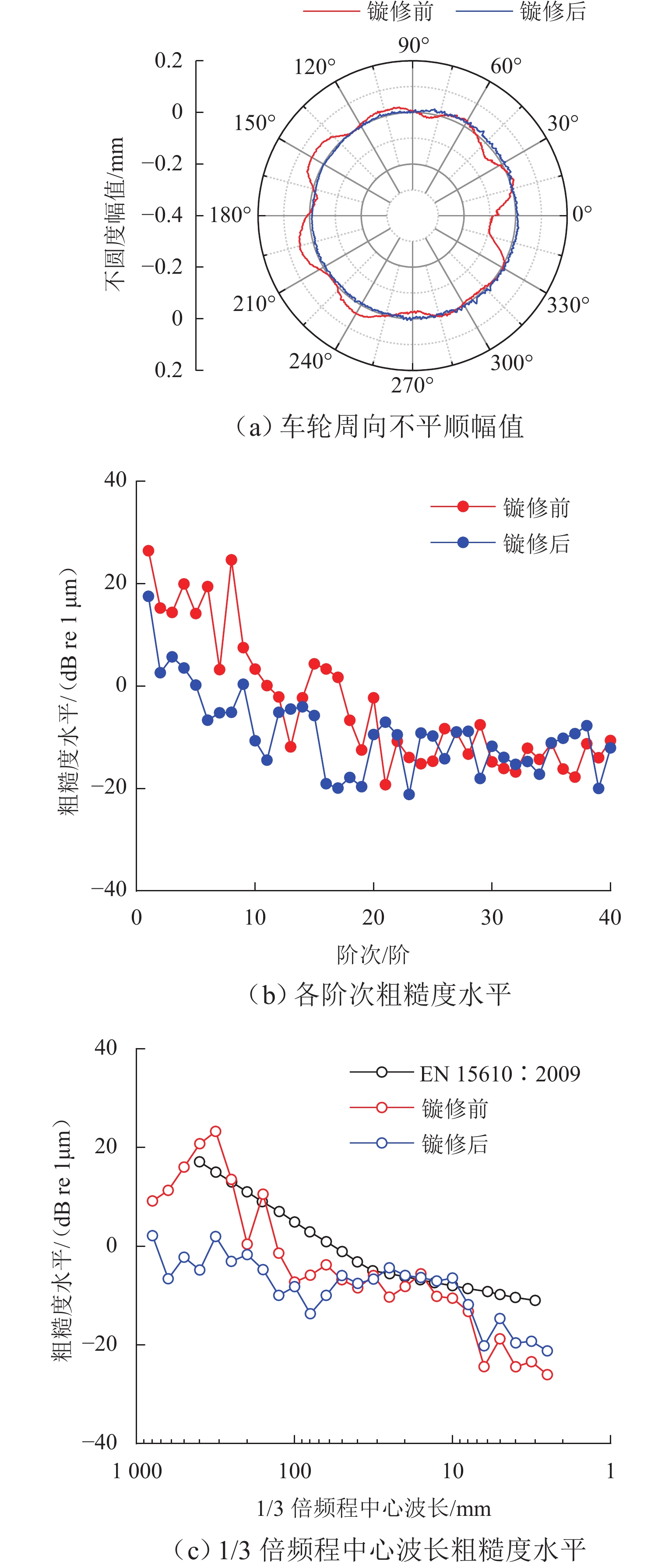
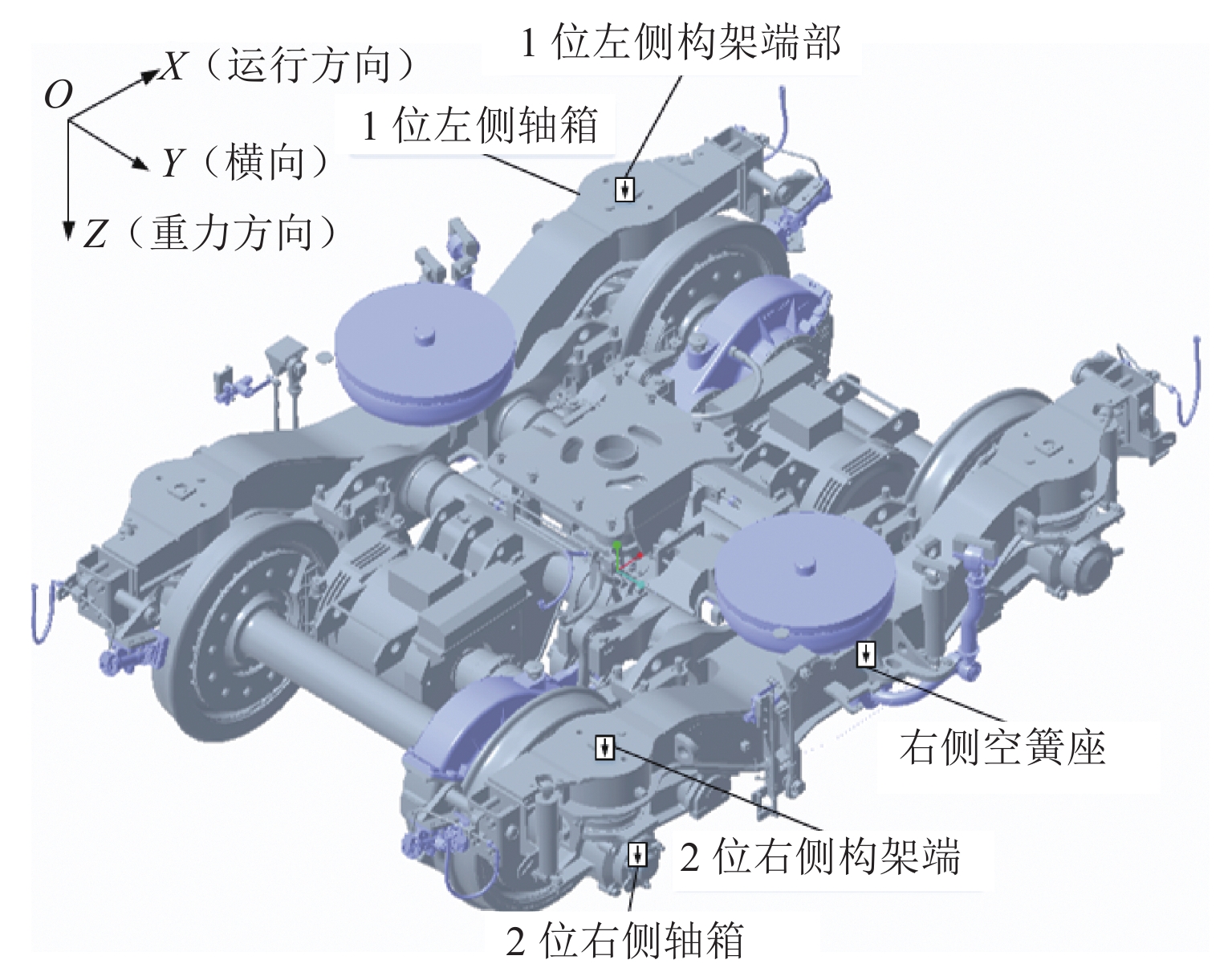
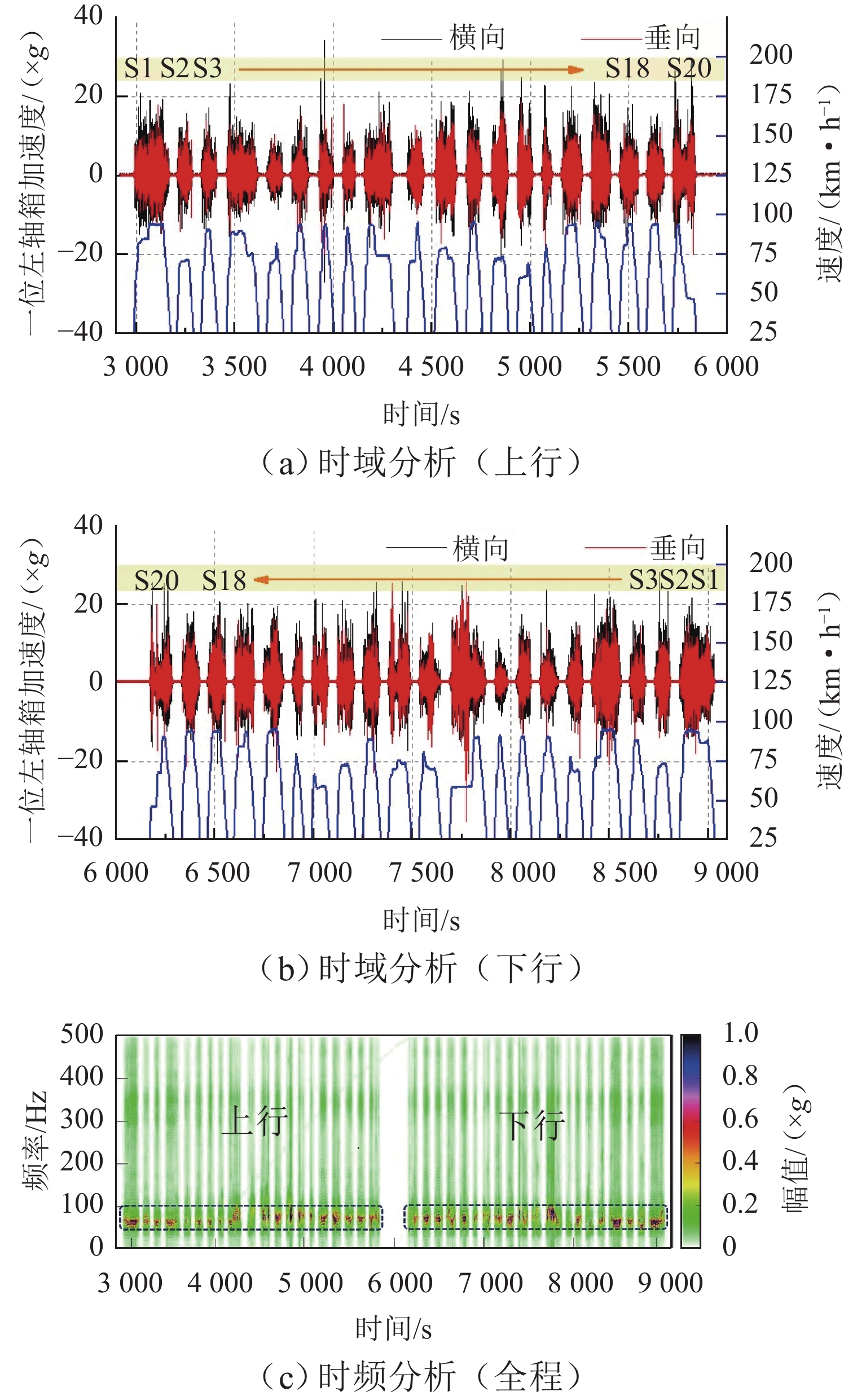
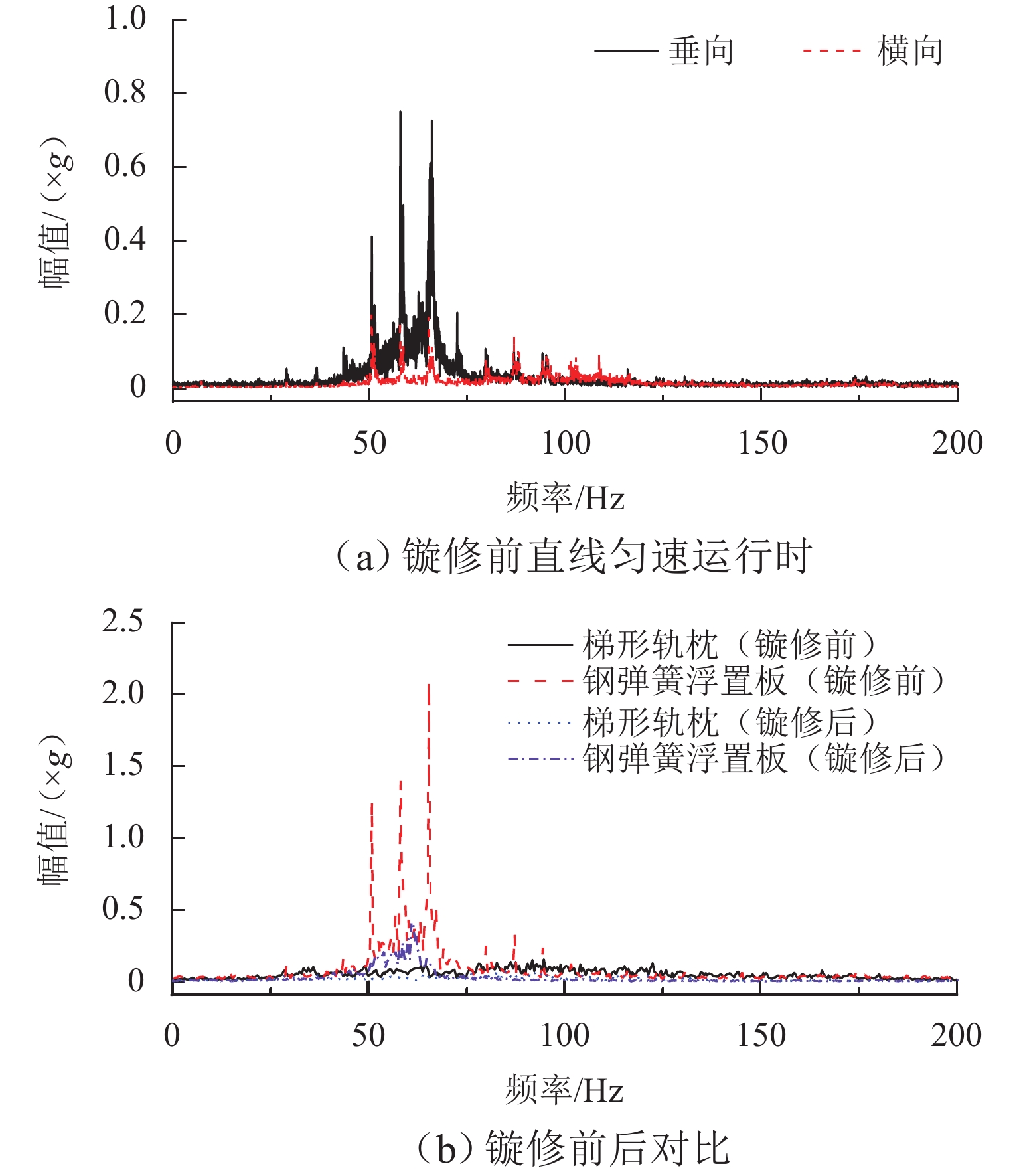

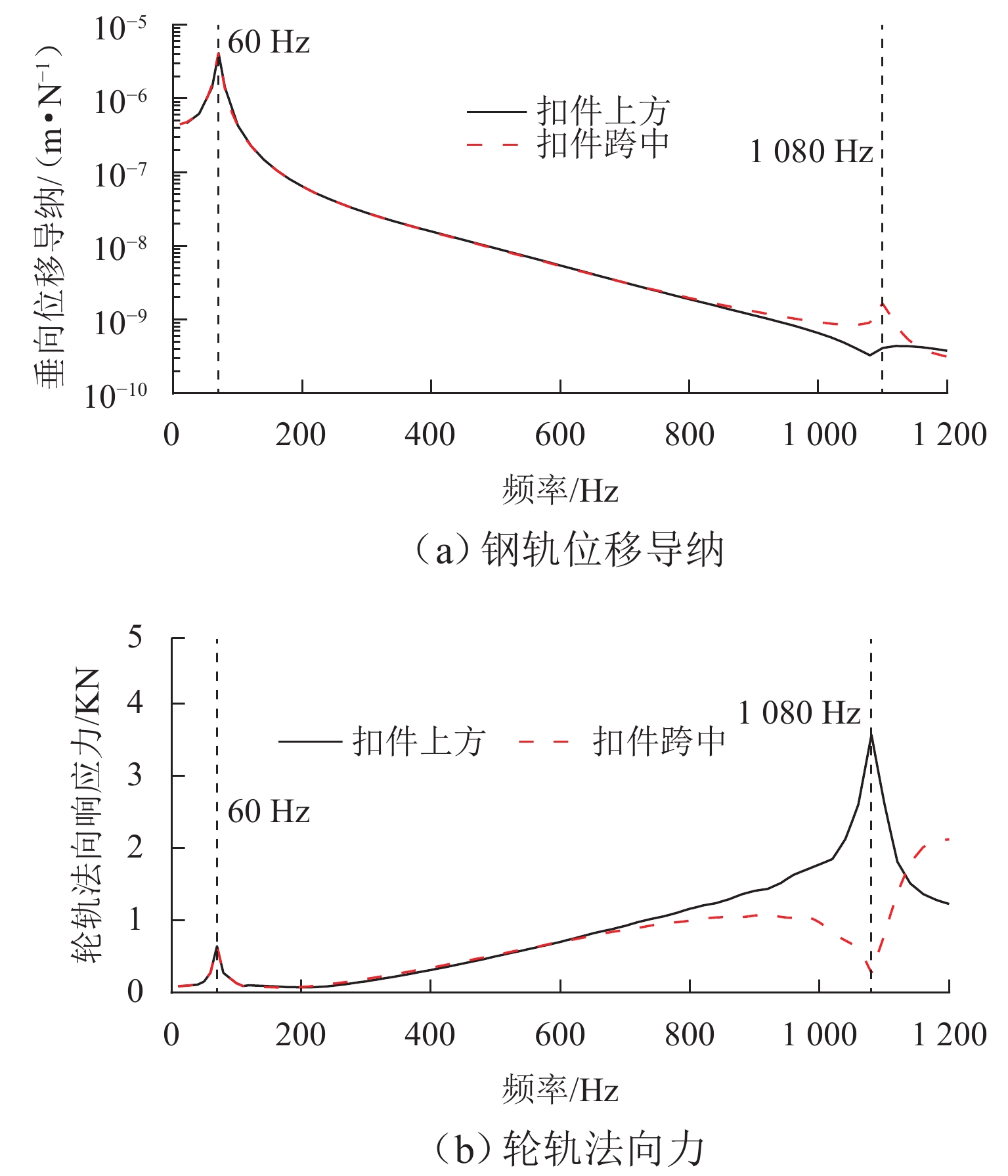

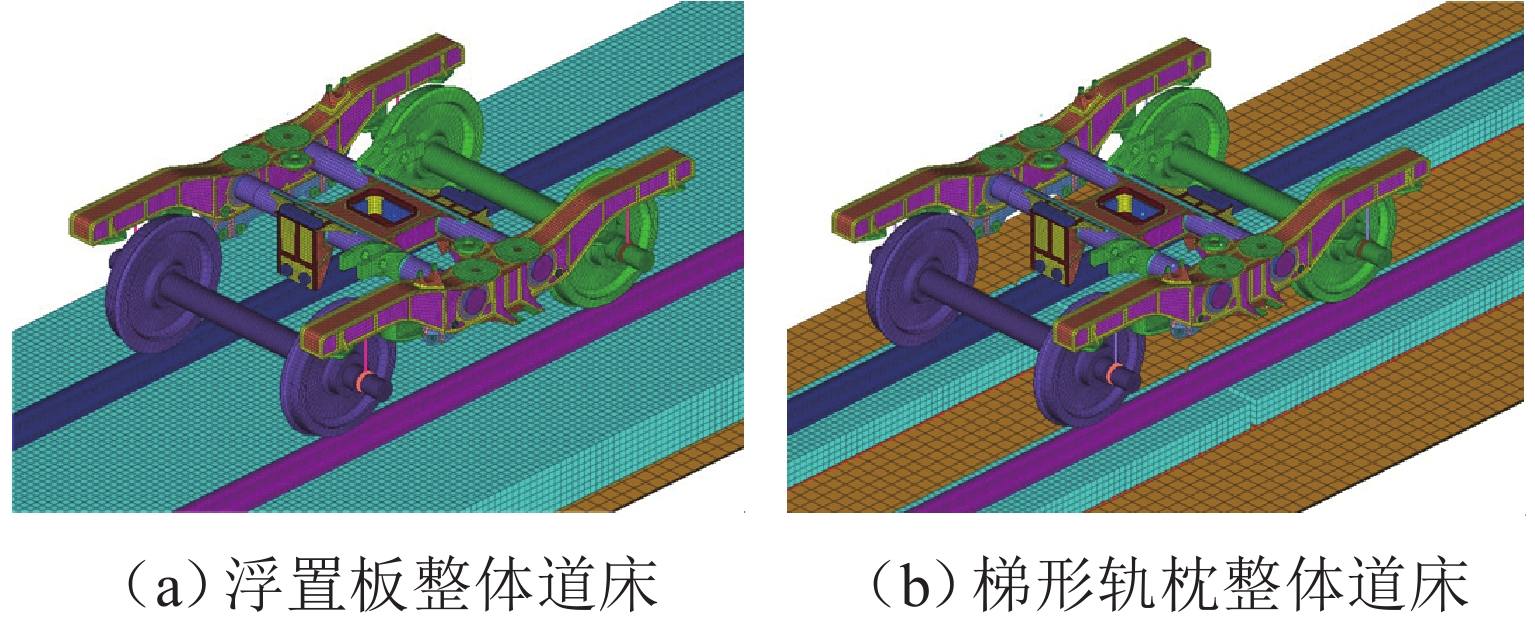
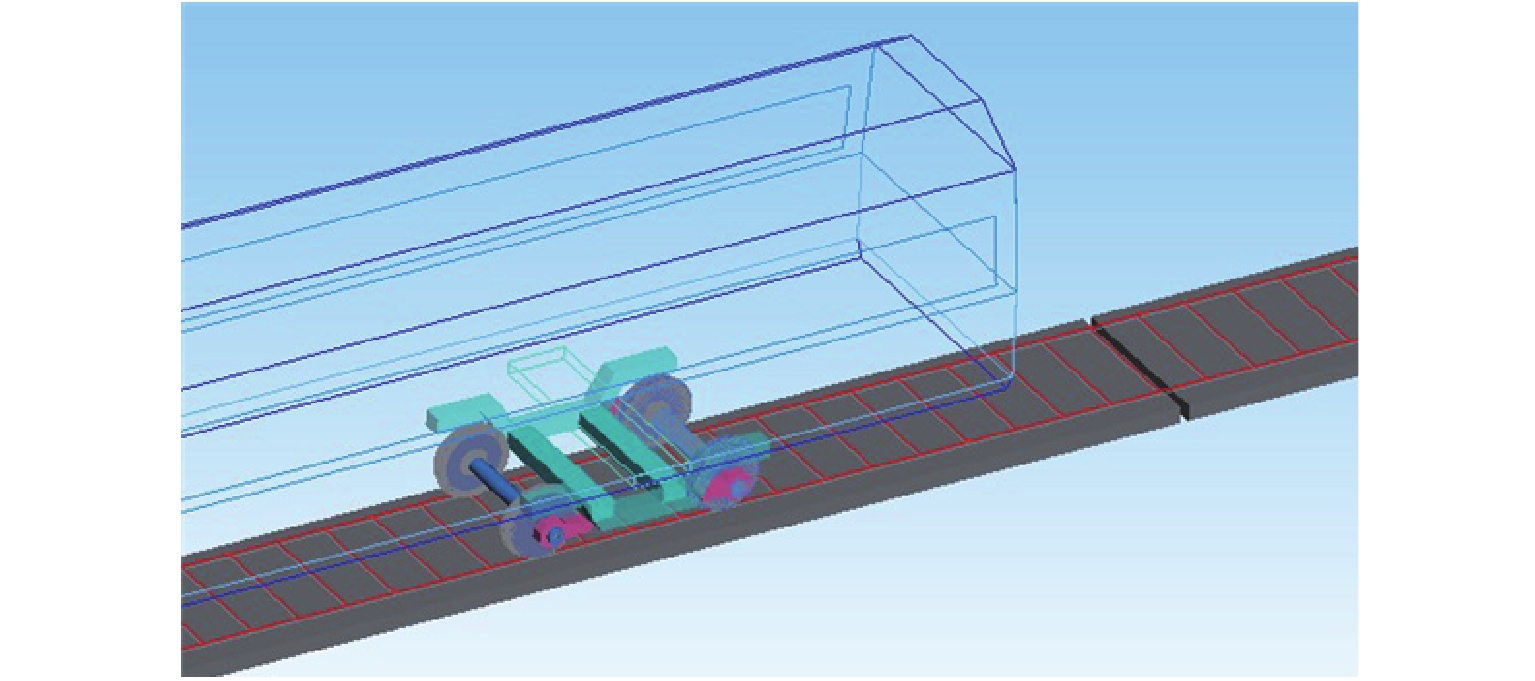
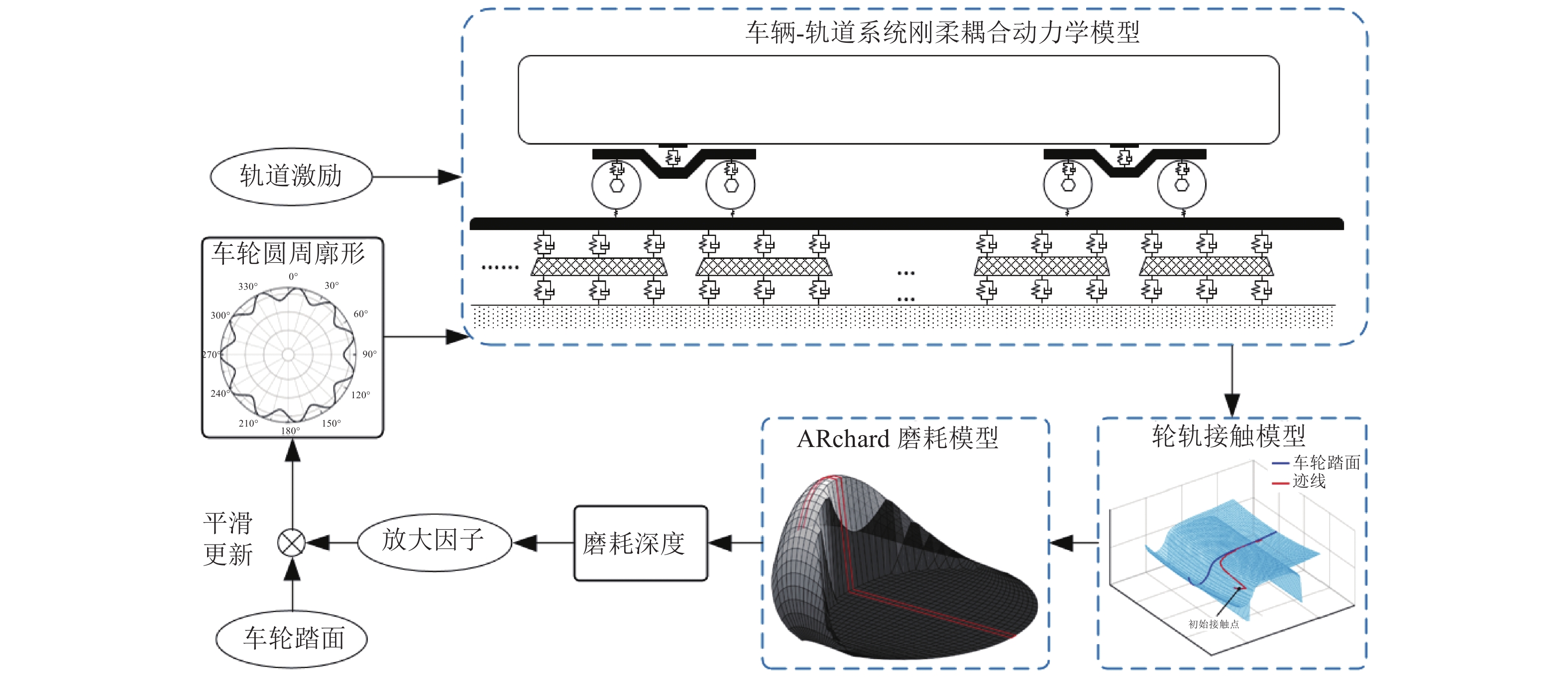
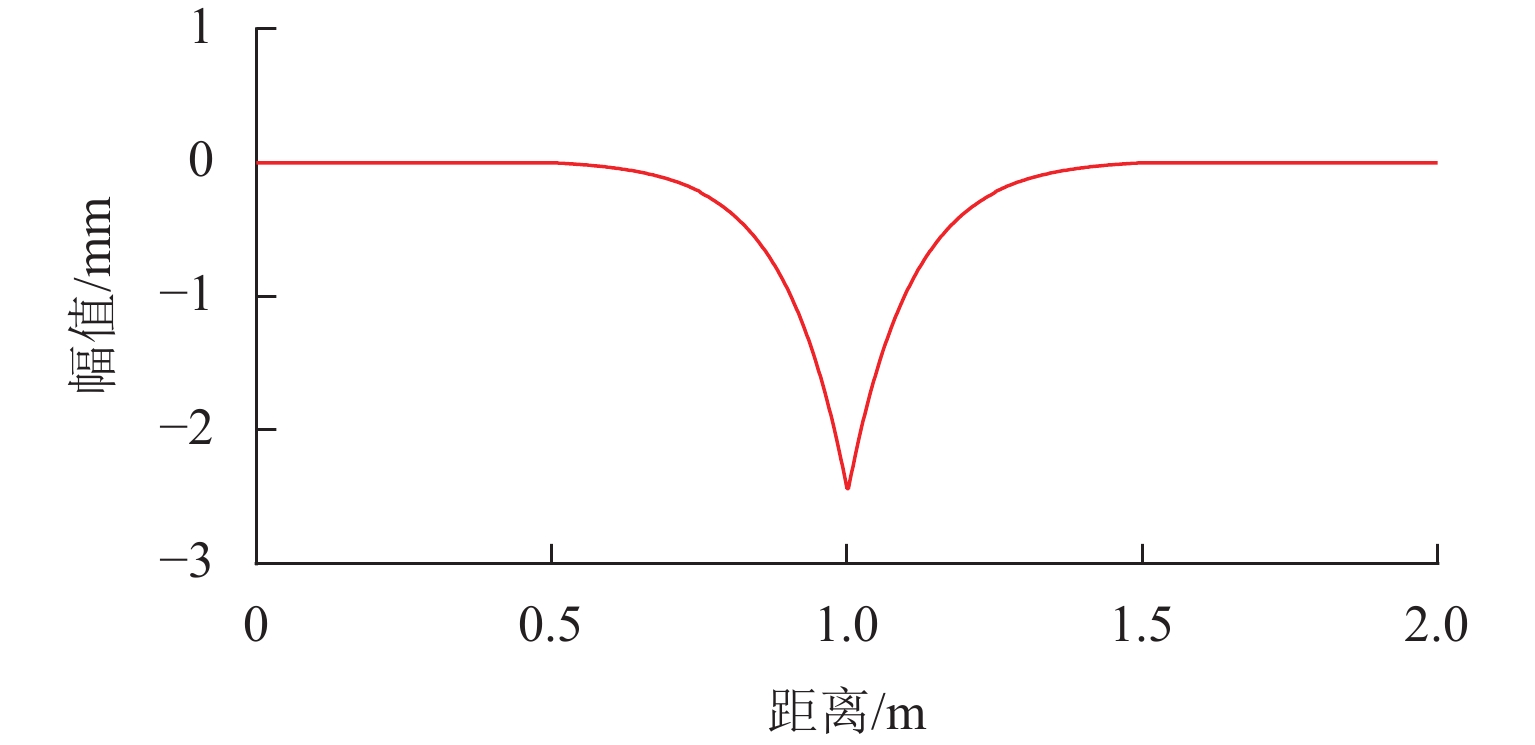
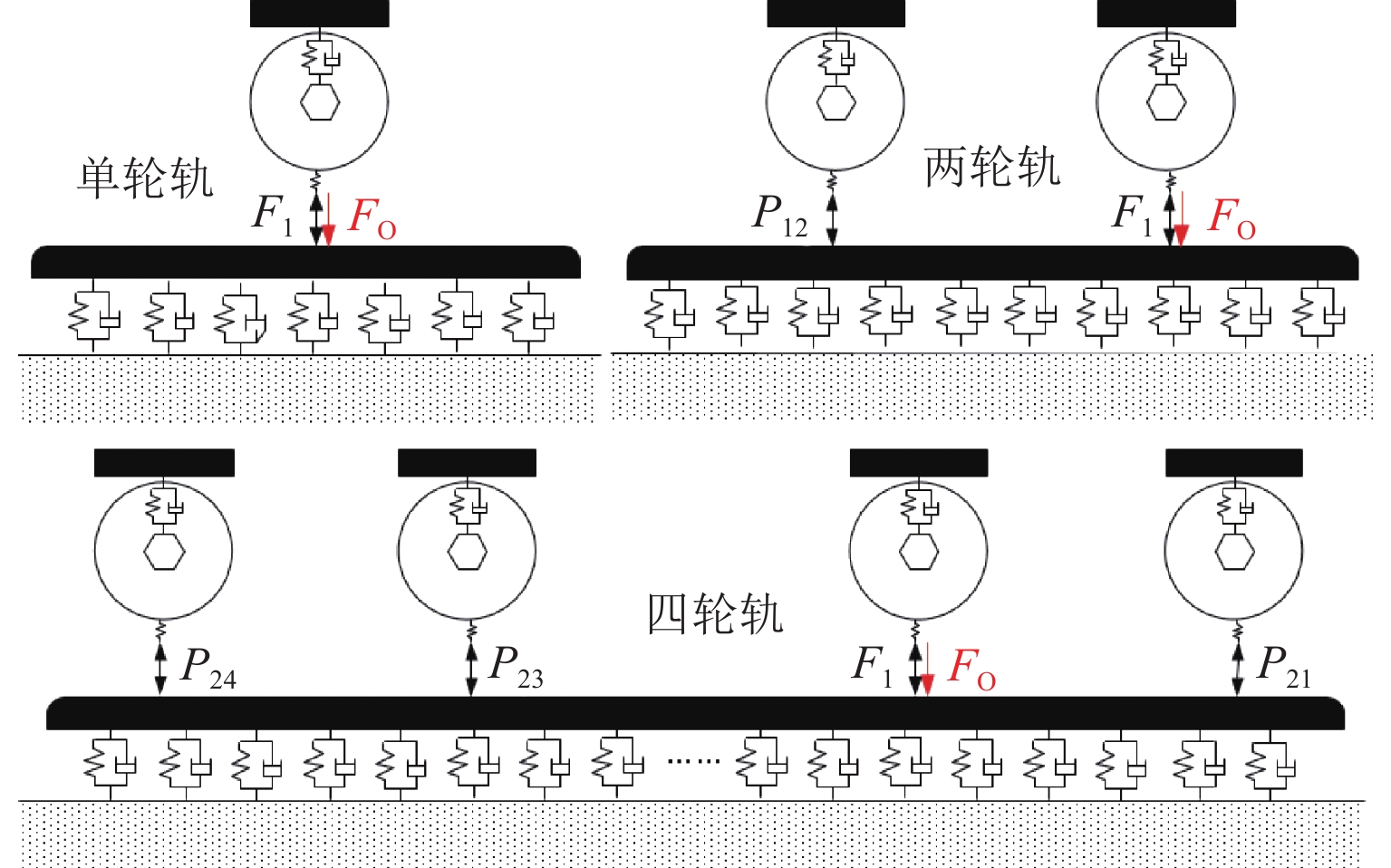

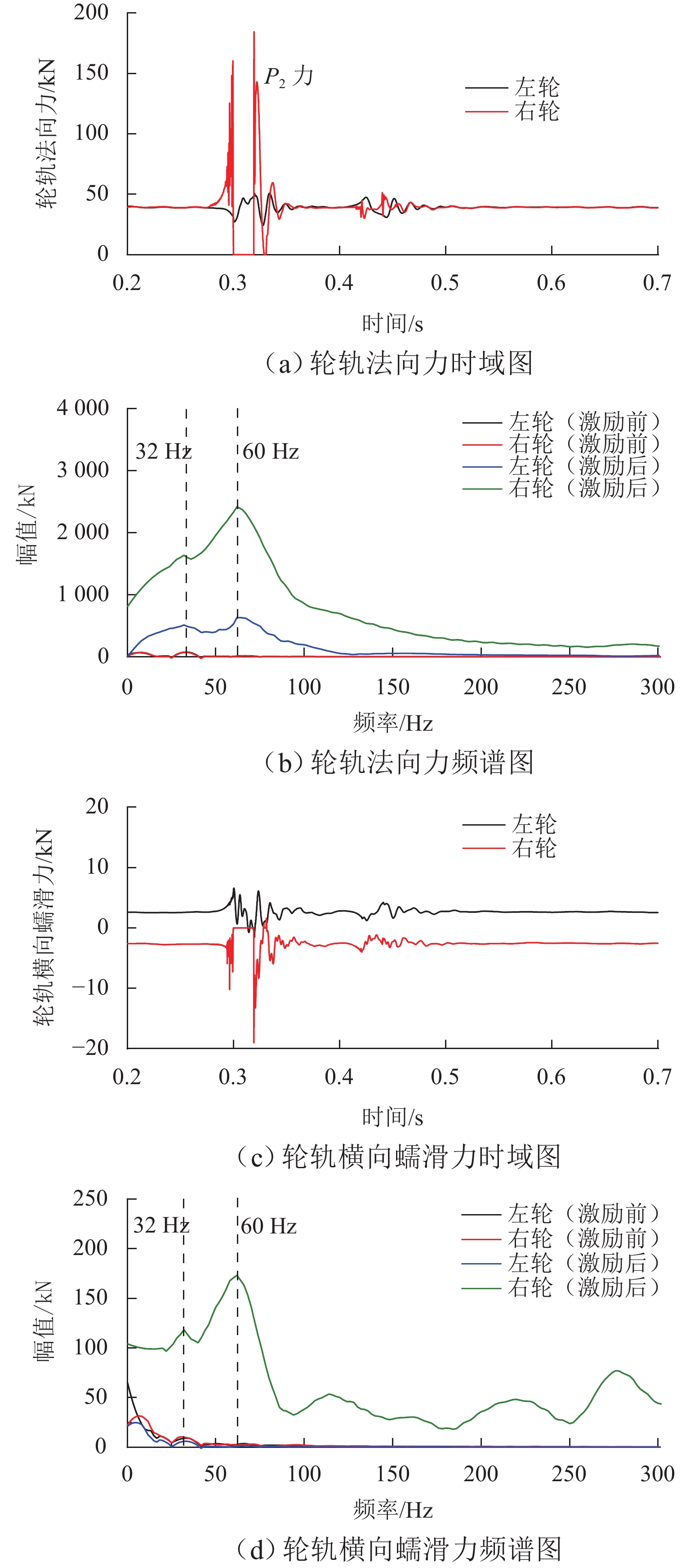
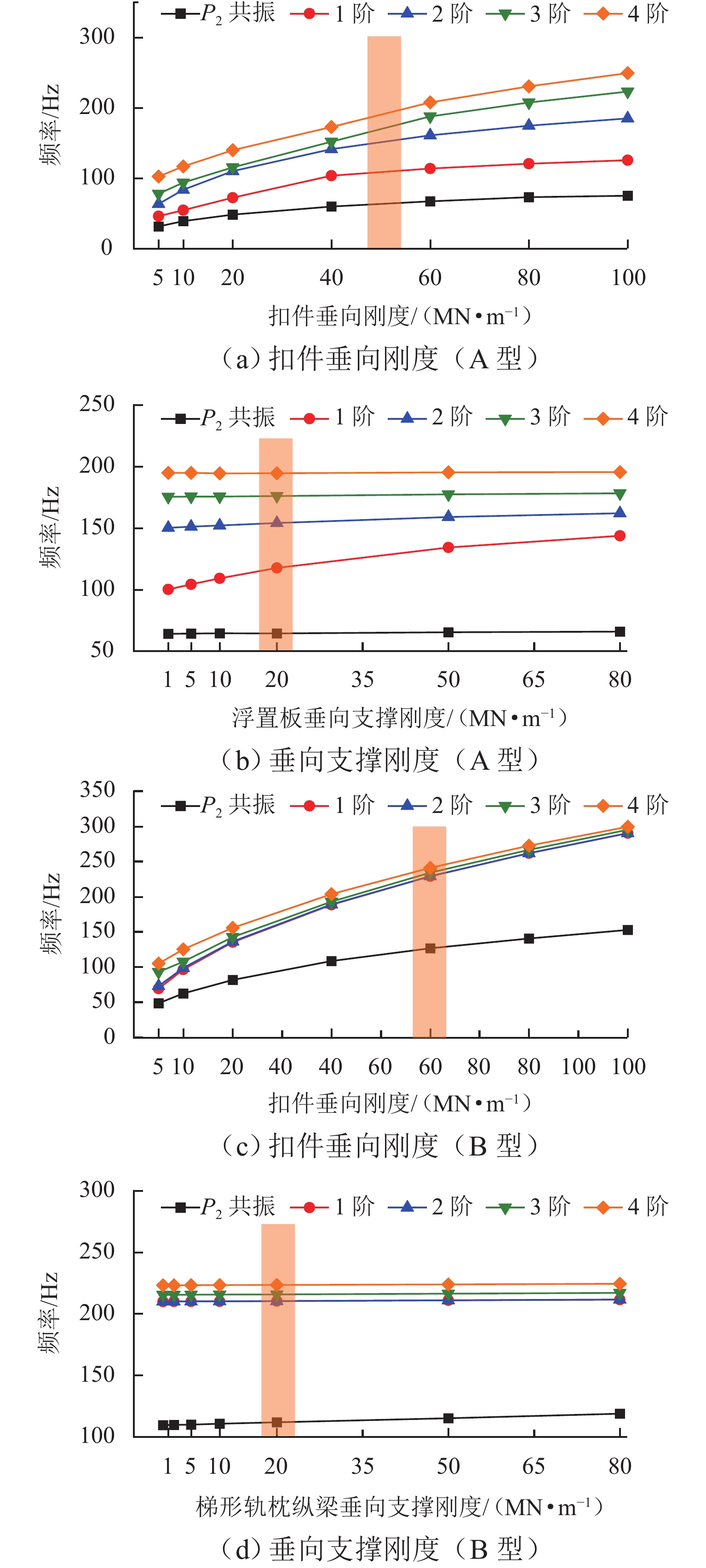

 百度学术
百度学术















